Master Top Breathing Exercises: Unlock Better Health & Deep Relaxation Today
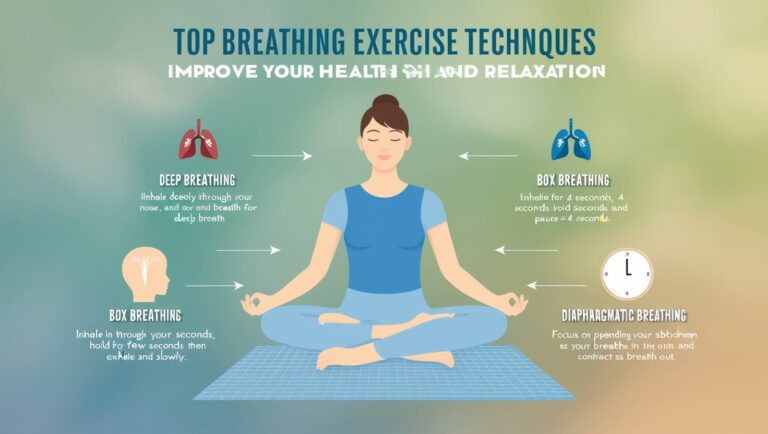
Breathing is something we do all the time without thinking about it. But did you know that how you breathe can affect your whole body? Breathing exercises are simple ways to help you relax, reduce tension, and relieve stress. You can do them anytime and anywhere, and they don’t require any special tools. Let’s explore some top breathing techniques that can improve your health and relaxation.
Key Takeaways
- Breathing exercises can help you relax and reduce stress.
- You don’t need special tools to practice these exercises.
- You can try different techniques to see which one works best for you.
- Breathing exercises can be done anytime and anywhere.
- Consistent practice can lead to greater health benefits.
Deep Breathing
Most people take short, shallow breaths into their chests. This can make you feel anxious and zap your energy. With deep breathing, you’ll learn how to take bigger breaths, all the way into your belly.
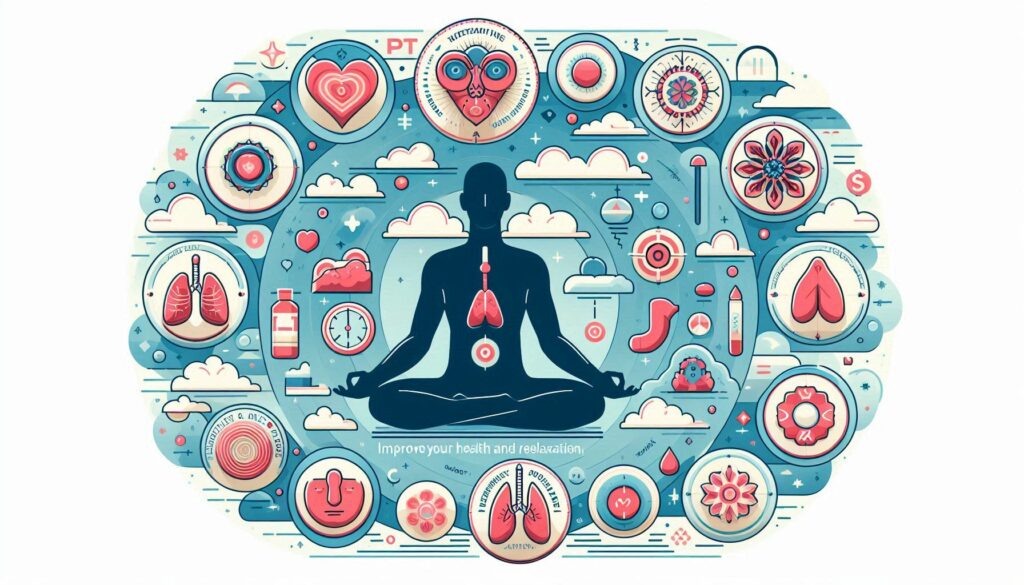
Steps to Practice Deep Breathing
- Sit or lie down in a comfortable place.
- Bring your awareness to your breaths without trying to change how you’re breathing.
- Alternate between normal and deep breaths a few times. Notice any differences between normal breathing and deep breathing. Notice how your abdomen expands with deep inhalations.
- Note how shallow breathing feels compared to deep breathing.
- Practice your deep breathing for a few minutes.
- Place one hand below your belly button, keeping your belly relaxed, and notice how it rises with each inhale and falls with each exhale.
- Let out a loud sigh with each exhale.
- Begin the practice of breath focus by combining this deep breathing with imagery and a focus word or phrase that will support relaxation.
This type of breathing is deep, even breathing that engages your diaphragm, allowing your lungs to expand and creating negative pressure that drives air in through the nose and mouth, filling your lungs. This is the way newborn babies naturally breathe. You’re also probably using this pattern of breathing when you’re in a relaxed stage of sleep.
Deep breathing helps you avoid the “fight-or-flight” response (acute stress response) to mentally or physically terrifying situations.
Pursed Lip Breathing
Pursed lip breathing is a simple technique that helps you take deep breaths more slowly and intentionally. This method is especially beneficial for people with lung conditions like emphysema and chronic obstructive pulmonary disease (COPD).
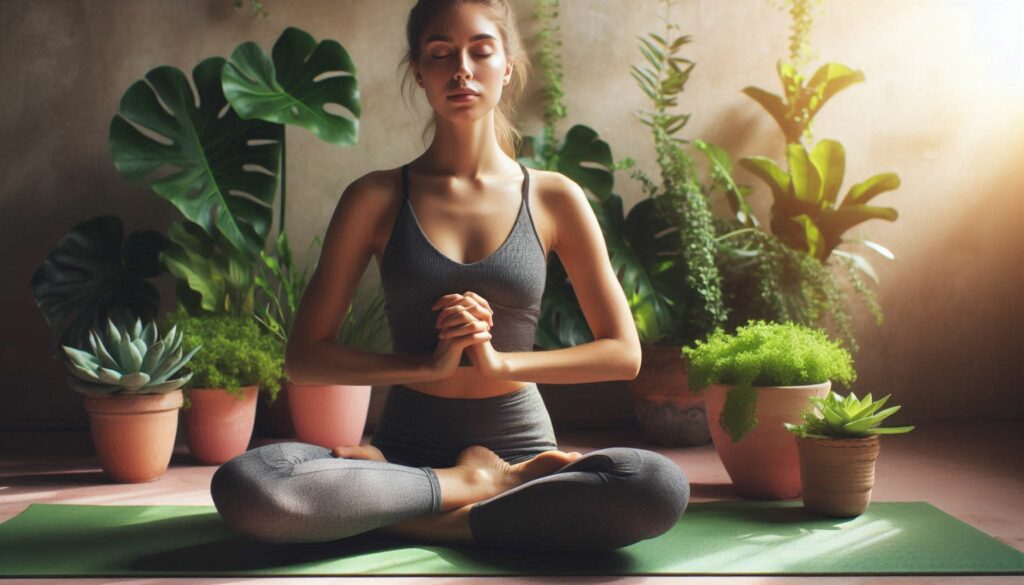
To practice pursed lip breathing, follow these steps:
- Sit comfortably with your neck and shoulders relaxed.
- Inhale slowly through your nostrils for two seconds, keeping your mouth closed.
- Exhale through your mouth for four seconds, puckering your lips as if giving a kiss.
- Keep your breath slow and steady while breathing out.
Practice this technique four to five times a day to get the correct breathing pattern. You can use it during activities like bending, lifting, or climbing stairs.
This exercise reduces the number of breaths you take and keeps your airways open longer, allowing more air to flow in and out of your lungs.
By slowing down your breathing pace, pursed lip breathing helps you stay more physically active and reduces the work of breathing.
Belly Breathing
Belly breathing, also known as diaphragmatic breathing, is a simple yet powerful technique. It helps you relax and manage stress by focusing on your breath. Here’s how to do it:
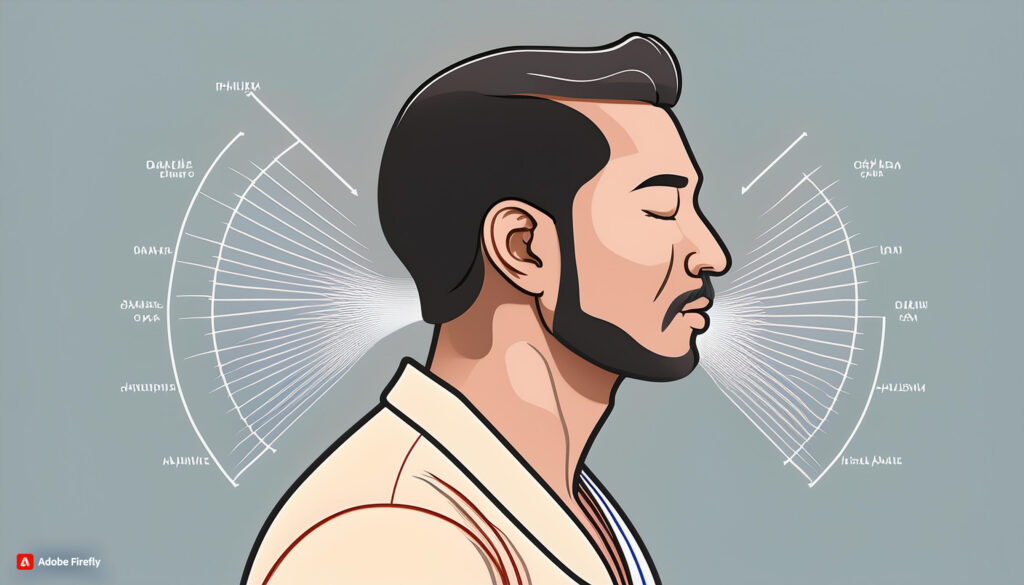
- Sit comfortably or lie down on your back.
- Place one hand on your chest and the other on your belly, just below your ribcage.
- Breathe in slowly through your nose, letting your belly rise as it fills with air.
- Breathe out through your mouth, making sure your belly falls as you exhale.
- Repeat this process 3 to 10 times, taking your time with each breath.
Belly breathing is a great way to retrain your diaphragm to help fill and empty your lungs. This can be especially useful for relaxation techniques.
Remember to keep your neck and shoulders relaxed throughout the exercise. This will help you get the most benefit from your practice.
Breath Focus
Breath focus is a simple yet powerful technique to help you relax and stay present. If you’re struggling to stay focused, this method can improve your concentration. Here’s how to do it:
- Sit in a comfortable position with your back straight.
- Close your eyes and take a few deep breaths.
- Choose a focus word or phrase that makes you feel calm, like peace, relax, or let go.
- As you inhale, silently say your focus word or phrase.
- As you exhale, let go of any tension and repeat your focus word or phrase.
Start with a 10-minute session and gradually increase the duration to 20 minutes. If your mind wanders, gently bring your attention back to your breathing and your focus word. This practice can help you feel more centered and at ease.
Lion’s Breath
Lion’s Breath is an energizing yoga breathing practice that can help relieve tension in your jaw and facial muscles. It’s also known as Lion’s Pose or Simhasana in Sanskrit.
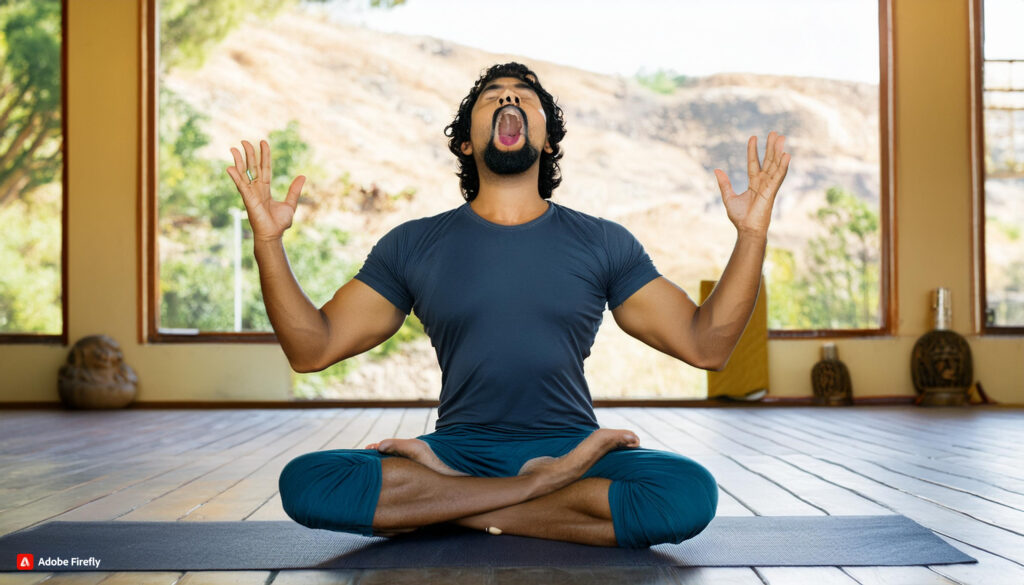
To do this exercise, follow these steps:
- Sit comfortably on the floor or in a chair.
- Breathe in through your nose, filling your belly with air.
- When you can’t breathe in anymore, open your mouth wide and stick out your tongue.
- Exhale forcefully with a “HA” sound.
- Repeat several times.
Imagine you’re a lion as you do this exercise. Let all of your breath out with a big, open mouth. This practice can help you feel more relaxed and energized.
Alternate Nostril Breathing
Alternate nostril breathing, also known as Nadi Shodhana, is a calming practice that involves blocking one nostril at a time while breathing through the other. This technique is best done in a seated position to keep your posture straight. It can help reduce anxiety and improve meditation.
Here’s how to do it:
- Sit comfortably with your spine straight.
- Close your right nostril with your right thumb.
- Inhale deeply through your left nostril.
- Close your left nostril with your right ring finger.
- Release your right nostril and exhale through it.
- Inhale through your right nostril.
- Close your right nostril again and release your left nostril.
- Exhale through your left nostril.
- Repeat this cycle for a few minutes, keeping your breath smooth and even.
Alternate nostril breathing is one of the most effective pranayama exercises to relieve anxiety. This exercise can restore vata balance and put your body and mind at ease.
Equal Breathing
Equal breathing, also called Sama Vritti in Sanskrit, is a technique where you inhale and exhale for the same length of time. This method helps make your breath smooth and steady, bringing about balance and calmness. Equal breathing can be particularly helpful for improving mental well-being and increasing the oxygen supply to your brain and lungs.
To practice equal breathing, follow these simple steps:
- Sit or lie down in a comfortable position.
- Close your eyes and take a deep breath in through your nose, counting to four.
- Exhale through your nose for the same count of four.
- Repeat this cycle for several minutes, focusing on the evenness of your breath.
This technique emphasizes inhaling and exhaling for the same duration, boosting balance and focus.
If you find it difficult at first, start with a shorter count and gradually increase it as you become more comfortable. Practicing equal breathing regularly can help you feel more centered and relaxed.
Resonant Breathing
Resonant breathing, also known as coherent breathing, is a technique where you breathe at a rate of 5 full breaths per minute. This method can slow down the heart rate and reduce blood pressure, helping the body recover from stress. It feels like calmness and reduced muscle tension.
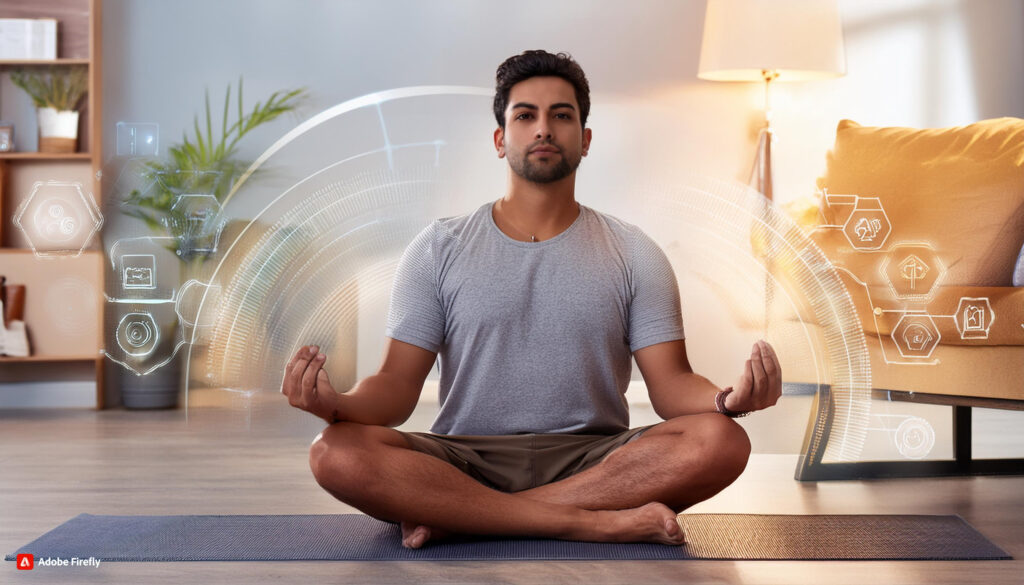
To practice resonant breathing:
- Lie down and close your eyes.
- Gently breathe in through your nose, mouth closed, for a count of six seconds. Don’t fill your lungs with too full of air.
- Exhale for six seconds, allowing your breath to leave your body slowly and gently without forcing it.
- Continue for up to 10 minutes.
- Take a few additional minutes to be still and focus on how your body feels.
Resonant breathing can help you get into a relaxed state and reduce anxiety. It’s a simple yet powerful way to improve your overall well-being.
Sitali Breath
Sitali Breath is a yoga breathing practice that helps you lower your body temperature and relax your mind. It’s a great way to cool down and find calm. Since you inhale through your mouth during Sitali Breath, it’s best to practice in a place free of allergens and air pollution.
How to Do Sitali Breath
- Sit in a comfortable position.
- Roll your tongue into a tube shape.
- Inhale deeply through your mouth, letting the air pass over your tongue.
- Close your mouth and exhale slowly through your nose.
- Repeat this pattern for a few minutes.
This technique is part of the ultimate guide to improving your fitness with self-care tips for better workouts, mood, and focus. Balance exercise and mental wellness for a fun and effective routine.
Humming Bee Breath
Humming Bee Breath, also known as Bhramari, is a yoga breathing practice that creates a unique sensation, helping to bring about instant calm. This technique is especially soothing around your forehead and can be a great way to relieve frustration, anxiety, and anger. Research shows it may help reduce your heart rate, think more clearly, and feel less irritable or stressed.
To practice Humming Bee Breath, follow these steps:
- Choose a comfortable seated position.
- Close your eyes and relax your face.
- Place your first fingers on the tragus cartilage that partially covers your ear canal.
- Inhale deeply and gently press your fingers into the cartilage as you exhale.
- Keeping your mouth closed, make a loud humming sound.
- Continue for as long as is comfortable.
It’s best to practice in a place where you’re free to make a humming sound.
Incorporate this mindfulness technique into your daily routine to improve your mental health and find a moment of peace in your busy day.
Conclusion
Breathing exercises are a simple yet powerful way to improve your health and well-being. By practicing different techniques, you can find what works best for you and incorporate it into your daily routine. These exercises can help you relax, reduce stress, and even relieve muscle tension. Remember, you don’t need any special equipment or a lot of time to get started. Just a few minutes each day can make a big difference. So, take a deep breath, and start your journey to better health today!
Frequently Asked Questions
How do breathing exercises help the body?
Breathing exercises can help you relax, reduce tension, and relieve stress. They affect your whole body and can improve your overall well-being.
Do I need any special tools to do these exercises?
No, you don’t need any special tools or equipment to do breathing exercises. They are easy to learn and can be done anywhere.
What should I keep in mind before starting breathing exercises?
Choose a comfortable place, wear comfy clothes, and try to do the exercises at the same time each day. Also, don’t force it; just relax and breathe naturally.
How long should I do these exercises?
Many breathing exercises take just a few minutes. When you have more time, you can do them for 10 minutes or more to get even greater benefits.
Which breathing exercise should I start with?
If you’re new to breathing exercises, start with belly breathing. It’s simple to learn and very relaxing. Once you’re comfortable, you can try more advanced techniques.
Can these exercises help with stress and anxiety?
Yes, breathing exercises are known to help reduce stress, and anxiety, and even improve sleep. They help you focus on your breath and calm your mind.






